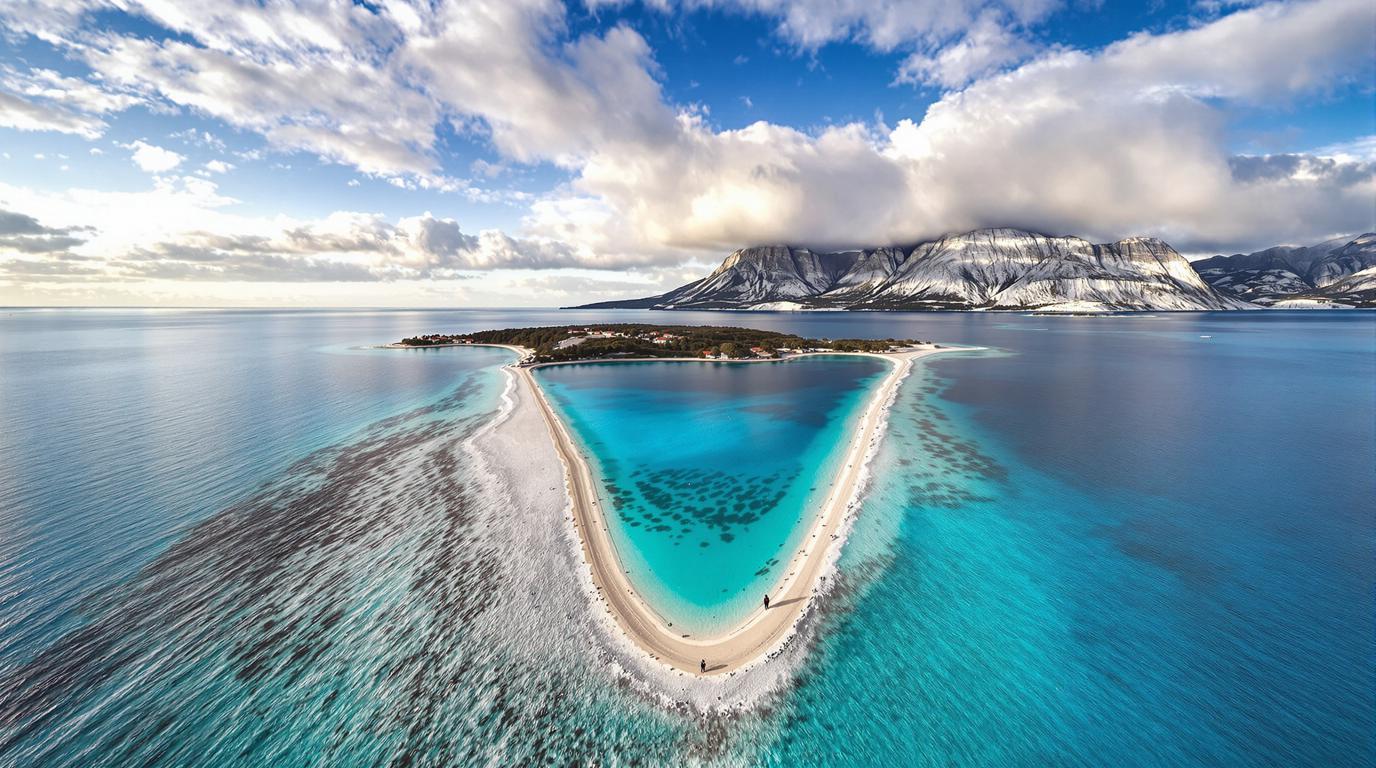The pristine beaches of Croatia hide a surprising winter secret. While sun-seekers crowd Mediterranean hotspots during summer, savvy European travelers are discovering that Brač Island – Croatia’s “Marble Island” – offers an affordable winter escape with a fraction of the tourists and prices up to 60% lower than peak season.
The marble island that built a palace
Brač’s brilliant white stone isn’t just any marble – it’s the legendary material used to build Diocletian’s Palace in Split and reportedly parts of the White House in Washington DC. In the picturesque town of Pučišća, stone masonry traditions dating back centuries continue at one of Europe’s last remaining stone masonry schools.
“Our marble connects us to the ancient world,” explains Marko Kovačić, master stonemason. “When visitors touch these quarry walls in winter, they’re touching the same material that emperors once walked upon.”
Why Europeans are flocking here in winter
With temperatures hovering around a comfortable 50°F (10°C) during winter months, Brač offers perfect conditions for hiking, cycling, and cultural exploration without summer’s oppressive heat or crowds. Unlike other Mediterranean destinations that essentially shut down, Brač maintains a vibrant local culture year-round.
Ferry tickets from Split cost just €5 for foot passengers during winter, compared to €15 in summer. Similarly, accommodations that command €150/night in July can be booked for €60 in January.
The shape-shifting golden horn
Zlatni Rat (Golden Horn) Beach represents everything unique about winter in Brač. This photogenic peninsula of fine pebbles constantly changes shape with the currents – and in winter, you’ll likely have it entirely to yourself.
Unlike tropical island getaways, Brač’s winter personality reveals a deeper connection to nature. The absence of swimmers allows you to appreciate the beach’s otherworldly beauty from Vidova Gora mountain, where winter’s clear air provides spectacular views across to neighboring islands.
Secret monastery hidden in stone
The 16th-century Blaca Monastery might be Brač’s most captivating winter destination. Built into a cliff face by refugee priests fleeing Ottoman expansion, this UNESCO-protected site feels particularly mystical during the quiet winter months.
“In winter, you can hear the monastery breathing,” says local guide Ana Jerčić. “The stone absorbs the silence, and you understand why monks chose this isolated spot to connect with something greater.”
Village life in slow motion
Winter reveals the authentic rhythm of Brač’s stone villages. In Škrip, the island’s oldest settlement, locals press olives into some of Croatia’s finest oil. Visitors are often invited to join family gatherings where stories flow as freely as homemade rakija (fruit brandy).
Unlike other Mediterranean coastal areas, winter on Brač isn’t about hibernation but celebration. The pre-Lenten carnival season brings colorful processions through villages like Bol and Supetar, offering cultural immersion impossible during the tourist-focused summer months.
Hiking trails with panoramic views
Winter’s mild temperatures create perfect conditions for exploring Brač’s network of hiking trails. The path to Dragon’s Cave near Murvica reveals mysterious relief carvings made by 15th-century monks, while the ascent of Vidova Gora rewards climbers with panoramic views reminiscent of Alpine vistas – but with the sparkling Adriatic below.
Underground treasures beneath marble streets
While some cities hide their underground treasures, Brač’s geological wonders are proudly displayed in winter when quarry tours operate without summer’s restrictions. The island’s famous stone glows with an almost luminous quality in winter’s diffused light.
“Winter reveals Brač’s soul,” shares Maria Krstulović, local historian. “When the last ferry leaves and darkness falls, you’re experiencing the island exactly as generations before you have for thousands of years.”
For Europeans seeking an affordable winter escape that combines natural beauty, rich history, and authentic cultural experiences, Croatia’s marble island offers a compelling alternative to crowded winter markets and overpriced ski resorts – all while saving enough euros to plan your next adventure.
